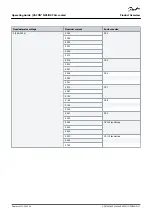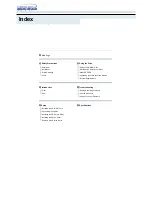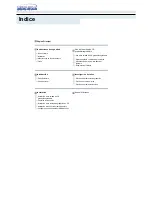
5 Mounting the Unit
5.1 Environmental Requirements
5.1.1 General Environmental Requirements
In environments with airborne liquids, particles, or corrosive gases, ensure that the protection rating of the equipment matches the
installation environment. Failure to meet requirements for ambient conditions can reduce the lifetime of the AC drive. Ensure that
requirements for humidity, temperature, and altitude are met.
Vibration and shock
The AC drive complies with requirements for units mounted on the walls and floors of production premises, and in panels bolted to
walls or floors.
AC drive is suitable for marine installations.
For detailed ambient conditions specifications, see
12.8 VACON® NXP Technical Data
Installation requirements:
•
Make sure that there is sufficiently free space around the AC drive for cooling, see
Standalone AC drives (FR10 to FR11)
•
Some free space is also necessary for maintenance.
•
Make sure that the mounting surface is sufficiently flat.
5.1.2 High Altitude Installation
The density of air decreases when the altitude increases and the pressure decreases. When the air density decreases, the thermal
capacity decreases (that is, less air removes less heat) and the resistance to electric field (breakdown voltage/distance) decreases.
The full thermal performance of VACON
®
NX AC drives is designed for installation up to 1000 m altitude. The electric insulation is
designed for installations up to 3000 m altitude (check details for different sizes in Technical Data).
Higher installation locations are possible, when obeying the derating guidelines in this chapter.
For permitted maximum altitudes, see
12.8 VACON® NXP Technical Data
.
Above 1000 m, decrease the limited maximum load current by 1% for each 100 m.
For information on option boards and I/O signals and relay outputs, see VACON
®
NX I/O Boards User Manual.
Example:
For example, at 2500 m altitude, decrease the load current down to 85% of the rated output current (100% – (2500–
1000 m) / 100 m x 1% = 85%).
When using fuses at high altitudes, the cooling effect of the fuse decreases as the density of the atmosphere decreases.
When using fuses above 2000 meters, the continuous rating of the fuse:
I = I
n
*(1- (h-2000)/100*0.5/100)
Mounting the Unit
Operating Guide | VACON® NXS/NXP Air-cooled
AQ275638903263en-000301 / DPD00910
34 | Danfoss A/S © 2020.02
















































